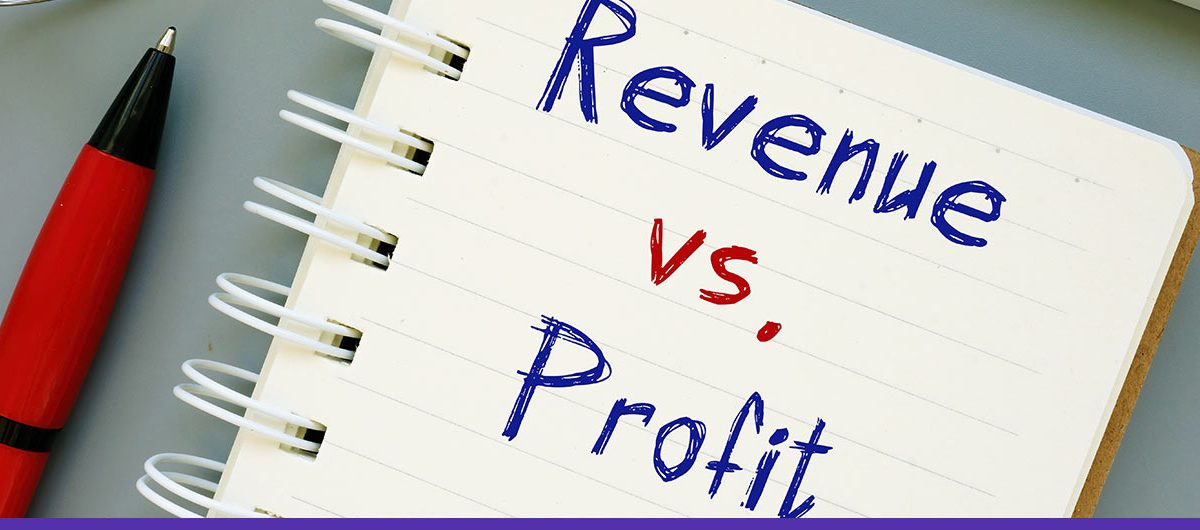Why Revenue And Profit Aren’t The Same: A Comprehensive Guide

What Is Employer Tax Liability? Its Definition With Examples And Calculations
April 5, 2023
Subordinate Debts – Uses, Benefits And Types
April 7, 2023Why Revenue And Profit Aren’t The Same: A Comprehensive Guide
What is the Difference Between Revenue and Profit?
As a business owner or entrepreneur, one’s ultimate goal is to maximize their profits and grow revenue. But despite the importance of these metrics, many people still need help to fully understand the difference between revenue and profit and how they relate to each other.
In this blog post, we will explore everything you need to know about revenue and profit and why they are both crucial to the success of your business. We’ll cover the definitions of both the terms, show you how to calculate them, and why they are important indicators of your business’s financial health.
So, whether you’re a seasoned business owner looking to brush up on your financial knowledge or a newcomer trying to grasp the basics better, this post will provide all the information you need to succeed. So, let’s dive in and explore the world of revenue and profit!
Revenue
Revenue is the total amount of money a company generates from its operations. It is the income a company receives from selling its goods or services. Revenue is calculated by multiplying the price of the goods or services sold by the total number of units sold. For example, if a company sells 100 units of a product at $50 per unit, its total revenue will be $5,000.
Revenue is an important measure of a company’s performance as it reflects the total amount of money it generates. It is also used to calculate other financial metrics, such as gross margin, which is the difference between revenue and the cost of goods sold.
Profit
Profit is the money a company earns after deducting all its expenses from its revenue. It is the amount of money a company has left over after paying for all its costs, including goods sold, operating expenses, taxes, etc. Profit is calculated by subtracting the total expenses from the total revenue.
There are different types of profit, including gross, operating, and net profit. Gross profit is the difference between revenue and the cost of goods sold while operating profit is the difference between revenue and operating expenses. Net profit, also known as the bottom line, remains after all expenses, including taxes and interest expenses, have been deducted.
Profit is an important measure of a company’s financial health and sustainability. It indicates whether a company is making money and is often used to evaluate its performance over time. A company that consistently generates profit is considered financially stable and attractive to investors.
Step-by-step guide on how to get from revenue to profit
Now as we have known what’s the difference between revenue and profit, it is important to understand how one can go step by step from revenue to profit. As a business, more is needed to generate revenue – you also need to turn that revenue into profit to be successful and sustainable in the long term. Here’s a step-by-step guide on how to get from revenue to profit:
Calculate your revenue
The first step is determining how much revenue your business generates. Revenue is the total amount of money coming into your business from sales, subscriptions, fees, or any other source of income.
Identify your costs
To calculate your profit, you need to know your costs. These include any expenses incurred while running your business, such as materials, rent, salaries, and marketing.
Calculate your gross profit
Gross profit is the revenue you earn minus the cost of the goods or services sold. This is an important metric because it shows how much money you make before factoring in your other expenses.
Deduct your operating expenses
Once you know your gross profit, you can deduct your operating expenses, such as rent, salaries, marketing, and other expenses necessary to run your business.
Calculate your net profit
Your net profit is your gross profit minus your operating expenses. This is the amount of money your business has left over after all expenses have been paid.
Please review and adjust
It’s important to review your financial statements and make adjustments as necessary regularly. If your net profit is lower than expected, you may need to cut costs or find ways to increase revenue. Alternatively, if your net profit is higher than expected, you should reinvest that money into your business or consider expanding your operations.
Remember, generating revenue is just the first step – the ultimate goal is to turn that revenue into profit to ensure your business’s long-term success. By following these steps and regularly reviewing your financial statements, you can take control of your business’s finances and make informed decisions to drive growth and profitability.
Conclusion
To sum up, revenue and profit are key financial indicators that help businesses evaluate their financial health. While revenue is the total amount of money generated from sales, profit is what remains after deducting all expenses. Maintaining a healthy balance between generating revenue and controlling expenses is vital for long-term financial stability and growth. Therefore, businesses must focus on optimizing their revenue and reducing their costs to increase profitability and attract investors, leading to success in their industry.
Also Read: The 5 Most Important Profitability Ratios You Need for Your Small Business
Farwah Jafri
Farwah Jafri is a financial management expert and Product Owner at Monily, where she leads financial services for small and medium businesses. With over a decade of experience, including a directorial role at Arthur Lawrence UK Ltd., she specializes in bookkeeping, payroll, and financial analytics. Farwah holds an MBA from Alliance Manchester Business School and a BS in Computer Software Engineering. Based in Houston, Texas, she is dedicated to helping businesses better their financial operations.






